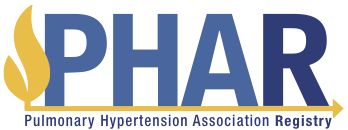| Title | Palliative care referrals in patients with pulmonary arterial hypertension: The Pulmonary Hypertension Association Registry. |
| Publication Type | Journal Article |
| Year of Publication | 2023 |
| Authors | Rohlfing, AB, Bischoff, KE, Kolaitis, NA, Kronmal, RA, Kime, NA, Gray, MP, Bartolome, S, Chakinala, MM, Frantz, RP, Ventetuolo, CE, Mathai, SC, De Marco, T |
| Corporate/Institutional Authors | PHAR Investigators |
| Journal | Respir Med |
| Volume | 206 |
| Pagination | 107066 |
| Date Published | 2023 Jan |
| ISSN | 1532-3064 |
| Keywords | Adult, Familial Primary Pulmonary Hypertension, Humans, Hypertension, Pulmonary, Palliative Care, Pulmonary Arterial Hypertension, Quality of Life, Referral and Consultation, Registries |
| Abstract | <p><b>BACKGROUND: </b>Pulmonary arterial hypertension (PAH) is a life limiting disease with substantial symptom burden and healthcare utilization. Palliative care alleviates physical and emotional symptoms for patients with serious illness, and has been underutilized for these patients.</p><p><b>OBJECTIVE: </b>To characterize patients with PAH referred to palliative care and identify predictors of referral.</p><p><b>METHODS: </b>We conducted an observational study of adult patients enrolled in the Pulmonary Hypertension Association Registry from January 2015 through June 2021, performing descriptive statistics on patient characteristics at baseline for all patients and the subset referred to palliative care. These characteristics were modeled in a backwards elimination Cox regression with time to referral to palliative care as the primary outcome.</p><p><b>RESULTS: </b>92 of 1,578 patients were referred to palliative care (5.8%); 43% were referred at their last visit prior to death. Referrals were associated with increasing age per decade (hazard ratio 1.35 [95% confidence interval 1.16-1.58]), lower body mass index (hazard ratio 0.97 [95% confidence interval 0.94-0.998]), supplemental oxygen use (hazard ratio 2.01 [95% confidence interval 1.28-3.16]), parenteral prostanoid use (hazard ratio 2.88 [95% confidence interval 1.84-4.51]), and worse quality of life, measured via lower physical (hazard ratio 0.97 [95% confidence interval 0.95-0.99]) and mental (hazard ratio 0.98 [95% confidence interval 0.96-0.995]) scores on the 12-item Short Form Health Survey.</p><p><b>CONCLUSION: </b>Patients with PAH are infrequently referred to palliative care, even at centers of excellence. Referrals occur in sicker patients with lower quality of life scores, often close to the end of life.</p> |
| DOI | 10.1016/j.rmed.2022.107066 |
| Alternate Journal | Respir Med |
| PubMed ID | 36470050 |
